







 |
||||||
 |
 |
 |
 |
 |
 |
 |
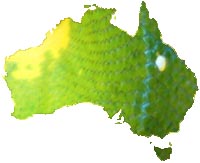
| About: Green Tree
Pythons (GTPs) are one of the most beautiful
species of python.
There are potentially 2 species of
GTPs, one that generally occurs
north of the central Cordillera of
New Guinea and one primarily to
the south. If split into two
species, the southern species,
including the regions of
Australia, the Merauke region,
southern New Guinea, and the Aru
islands, would retain species name
of viridis. Morelia
azurea would be used for
the northern species. This is a
smaller python, generally
attaining sizes around 3-4 feet
and 600 g in the wild. Range: These snakes have an extensive range throughout the island of New Guinea and outlying islands, but in Australia they are restricted to the Iron and McIlwraith ranges on the east coast of the Cape York Peninsula of Far North Queensland (See light green area on the map to the right). Habitat: They inhabit closed-canopy vine forests throughout their range. These snakes are truly adapted to an arboreal lifestyle and are very efficient climbers. Here is a link to a video of a wild GTP I found in the Iron Range that includes footage of an individual climbing a vine. Natural History Notes: These snakes are a small arboreal species that have some interesting natural behavior. They have a fairly predictable behavioral pattern of descending at dusk from their daytime rest area in the canopy as high as 60 feet up a tree. They will set up in ambush position at the base of a tree by wrapping their tail around the tree and pointing their heads downward a few inches from the ground. They may also position themselves on a horizontal branch above a game trail. They will remain in this spot until dawn, when they will make their way back up the tree or move to a new tree to take up the daytime position. Juvenile GTPs feed mainly on skinks. Young GTPs are forest edge specialists, and their yellow or red coloration render them less visible to predators in the dappled light of the forest edge. As they reach an appropriate size, they start the change to the characteristic green adult coloration. Along with the color change is a switch in dietary preference from cold-blooded prey to a primarily rodent diet as adults. They have also been observed to feed on moths, which is an unusual prey selection for an adult python. General Notes: While the Australian locale GTPs are not available outside of Australia, the green trees from the southern areas of New Guinea are very similar in appearance and share many characteristics with their Australian cousins. We are working with "Merauke" type GTPs, although this species is not found near the city and likely come from rainforest areas to the north of this area. This regional variant has the similar characteristic white vertebral markings that are prominent in Australian GTPs. |
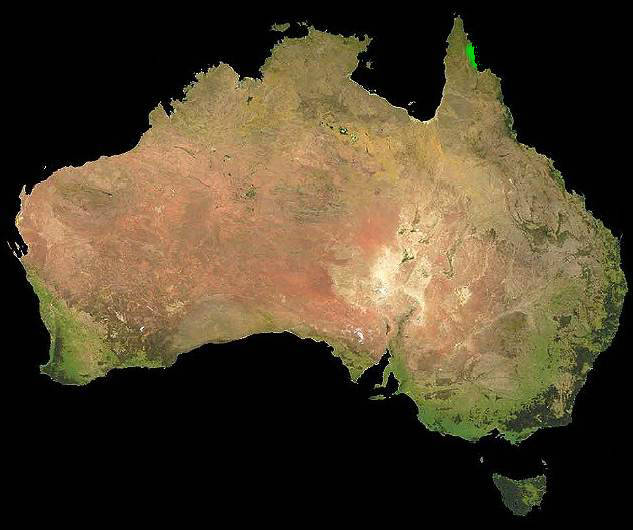 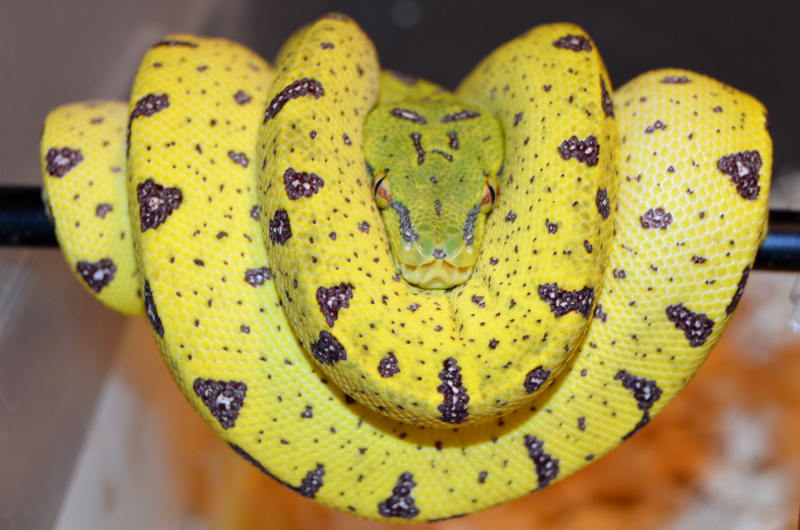
Juvenile M. viridis
start out yellow and undergo an ontogenic color
change
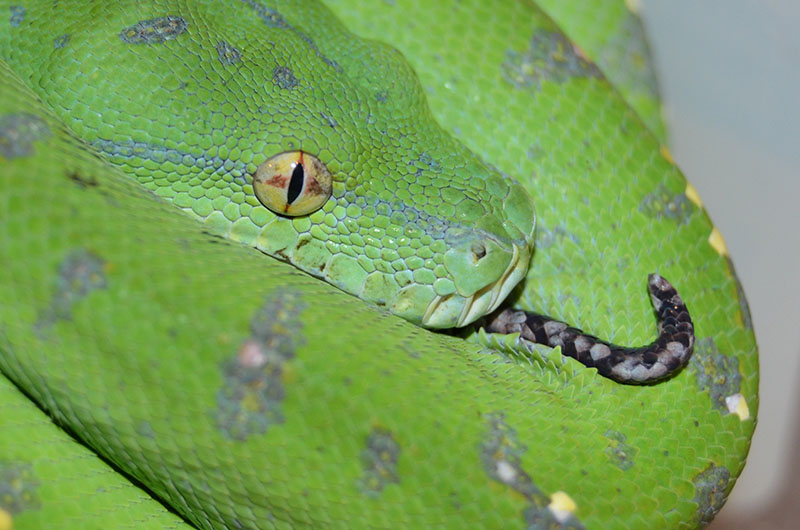
Close up detail of one of our male Meraukes. They
have fine scalation on the head, which is in
contrast to other Morelia
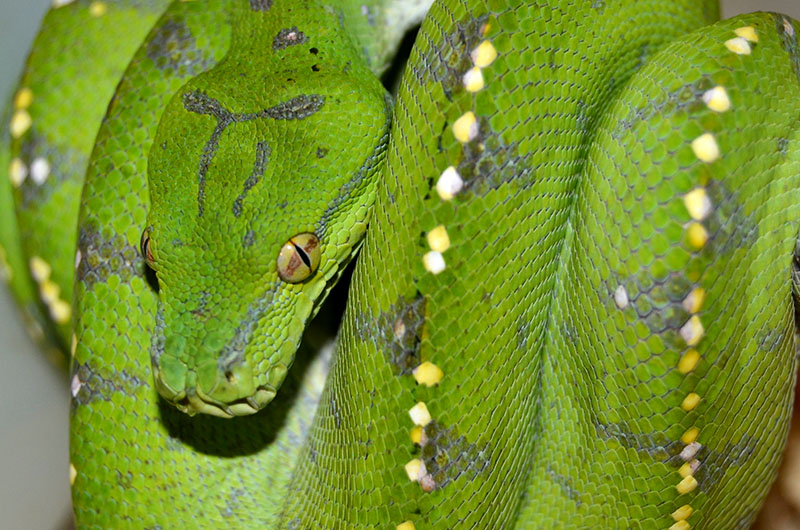 Nice stripe on this Merauke
Nice stripe on this Merauke |
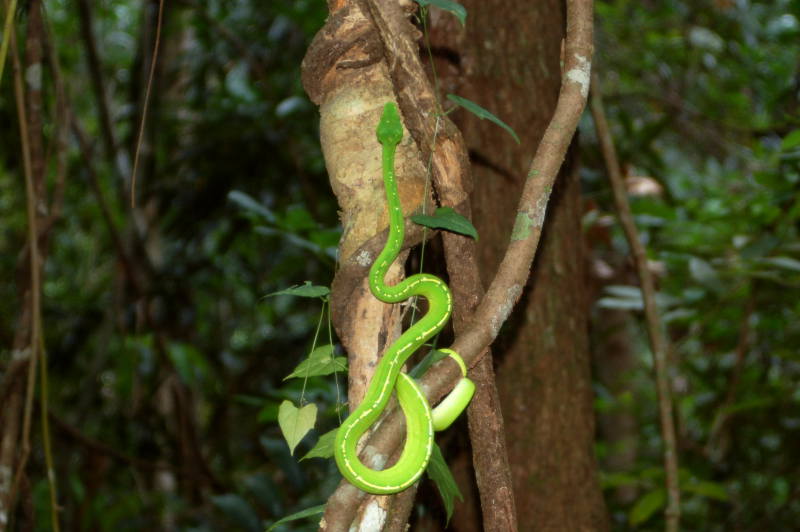
Wild individual in suitable
habitat in Iron Range, QLD, Australia
|
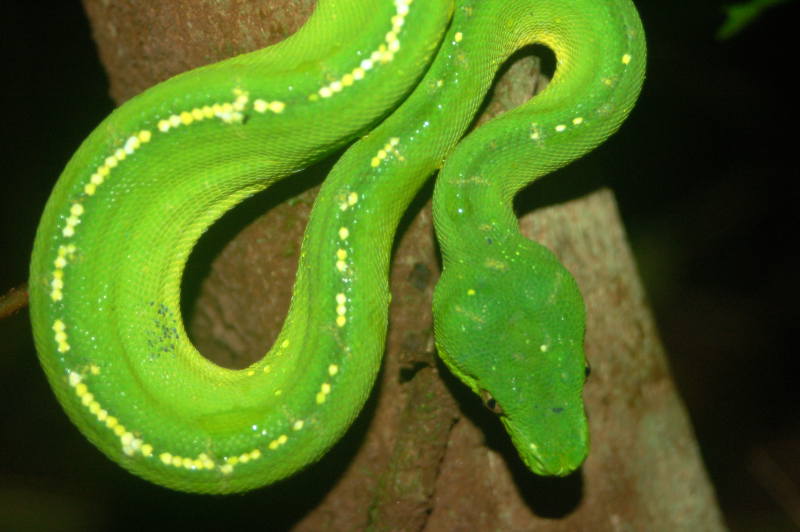
A wild Green Tree Python from
the Iron Range
|